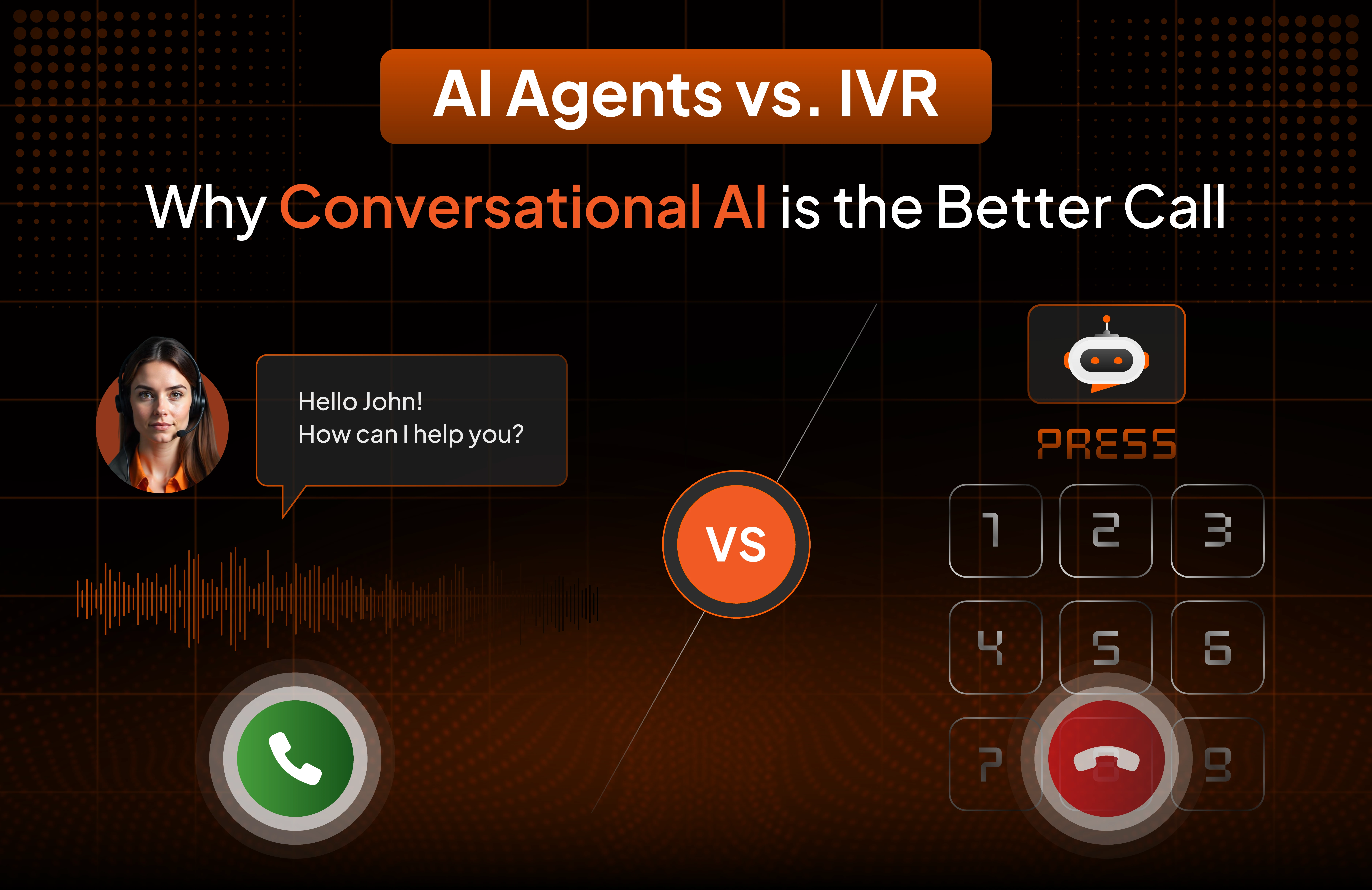The insurance industry is built on trust and timely communication. Policyholders expect quick responses, clear information, and seamless interactions, whether they’re filing a claim, updating their policy, or inquiring about a renewal. Traditionally, call centers have been the backbone of customer service in insurance. But with Conversational AI gaining traction, companies are now asking: Which model truly delivers better service and efficiency?
The reality is that the best solution depends on business goals, customer expectations, and operational constraints. In this Blog we dive into the nuances of both approaches and explore what works best in today’s evolving landscape.
The Role of Call Centers in Insurance
For decades, call centers have been essential for insurance providers, serving as the first point of contact for policyholders. Here’s what they bring to the table:
Strengths of Traditional Call Centers
1. Complex and sensitive conversations, such as claims related to personal loss, often require human empathy and judgment.
2. Situational Adaptability – Experienced agents can assess unique cases and adjust their responses accordingly.
3. Regulatory Compliance – Agents trained in FDCPA, TCPA, and insurance regulations ensure lawful and ethical interactions.
Limitations of Traditional Call Centers
1. High Operational Costs – Salaries, infrastructure, training, and compliance overhead make traditional call centers expensive to maintain.
2. Limited Availability – Most call centers operate during business hours, leading to customer frustration outside of those times.
3. Long Wait Times – High call volumes often result in long hold times, negatively impacting customer satisfaction.
4. Scalability Issues – Hiring and training new agents to meet increasing demand is time-consuming and costly.
How Conversational AI is Reshaping Insurance Customer Service
Conversational AI is not just about chatbots. Advanced AI-powered voice agents can speak naturally, answer questions, and complete tasks without human intervention, making them a game-changer for insurance companies looking to scale efficiently.
Advantages of Conversational AI for Insurance
1. 24/7 Availability – AI voice agents operate around the clock, ensuring policyholders always have access to support.
2. Cost Reduction – Automating repetitive calls significantly cuts operational expenses, reducing service costs by 30-50%.
3. Faster Service – AI eliminates long hold times, instantly providing claim updates, policy details, and payment reminders.
4, Scalability – AI can handle thousands of concurrent conversations, something human teams struggle with.
5. Consistent & Accurate Responses – Unlike human agents who may vary in tone and accuracy, AI ensures uniform messaging.
6. Seamless CRM Integration – AI voice agents can pull customer data in real-time, personalizing interactions without requiring manual lookups.
According to a McKinsey study, AI-driven automation in customer support can lead to a 20% increase in customer satisfaction and a 30% reduction in service costs. Deloitte’s research further highlights that 75% of insurance executives see AI as critical to their future operational strategy.
Comparing Conversational AI vs. Traditional Call Centers: What’s Best?
-min.png)
The Hybrid Approach: The Best of Both Worlds
The reality is that Conversational AI isn’t here to replace human agents, it’s here to complement them. A hybrid approach enables insurance companies to:
- Automate routine tasks (policy updates, claim status checks, payment reminders) with AI.
- Reserve human expertise for high-value cases that are complex.
This strategy reduces costs, enhances efficiency, and ensures customers always receive the best possible experience.
Real-World Use Cases of Conversational AI in Insurance
- Claims Status Updates – AI answers policyholders’ claim-related queries instantly, reducing inbound call volume.
- Lead Qualification – AI pre-screens potential customers and routes qualified leads to human agents.
- Policy Renewal Reminders – AI proactively calls or texts policyholders about upcoming renewals, boosting retention rates.
- Onboarding & KYC Assistance – AI guides new customers through paperwork and compliance requirements.
Customer Support for Common Queries – AI handles high-frequency questions, freeing human agents to focus on complex cases.
Final Verdict: Why Insurance Companies Should Invest in Conversational AI
The question isn’t whether AI will play a role in insurance customer service, it’s how soon companies will adopt it to stay competitive.
- Conversational AI is no longer a futuristic concept, it’s a necessity for insurers looking to scale efficiently, improve response times, and reduce operational costs.
- Human agents remain essential for complex, high-value cases, ensuring AI doesn’t replace but rather enhances the service model.
A Forrester study found that insurance companies integrating AI voice agents report a 40% reduction in customer service costs and a 20% increase in retention rates. The data is clear: AI isn’t just an option, it’s a competitive advantage.
Conversational AI is reshaping the way insurance companies engage with customers. While traditional call centers still provide value, AI-powered voice agents offer unmatched efficiency, scalability, and cost savings. The key is finding the right balance between AI automation and human expertise.
Want to see how Conversational AI can transform your insurance customer experience? Let’s talk.








.png)




%20(4).webp)
.png)
-min.png)




